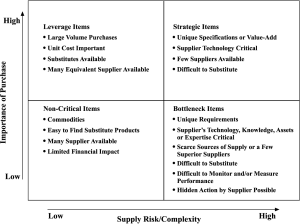The procure-to-pay process is critical to every organisation. For a manufacturing company, this will directly impact the raw materials and their production. For a retailer, it would affect the inventory available for sale. Thus, it is paramount that the process be as efficient and effective as possible, and not a source of vulnerability.
I used to work in an organisation where the company departmentalise different stages of the procure-to-pay process. The typical scenario is as follows: An individual employee initiates a requisition specifying what product and vendor they want to purchase from, the requisition is approved by the reporting manager, and the approved requisition is sent to the purchasing department for processing.
However, if the purchasing department was centralized, chances are someone will forecast purchasing needs or consolidate requisitions from different departments, subsidiaries, or geographical locations to strategically select vendors, take advantage of volume pricing, and initiate competitive bids with various vendors. Thus, I always thought that the company should have centralised their purchasing department. However, this advantages are only through on the surface and I am not aware of the other business considerations and constrains.
When optimizing the procure-to-pay process, the focus is often on higher value-add activities like cultivating optimal payables strategies with suppliers and banking information exchange, centralized master data management, workflow-driven approvals management, and global, electronic payment capabilities. However, the other departments will want the optimized procure-to-pay process to be about centralising so that the respective departments will not have to do their own purchasing.
James also shared two important points(in my opinion at least) during the lesson. Firstly, the case of Ford. I will get to this on another post after collecting some information from last semester’s module. Secondly the Kraljic’s Portfolio Matrix which is used to help purchasers maximize supply security and reduce costs, by making the most of their purchasing power. In doing so, procurement moves from being a transactional activity to a strategic activity.
